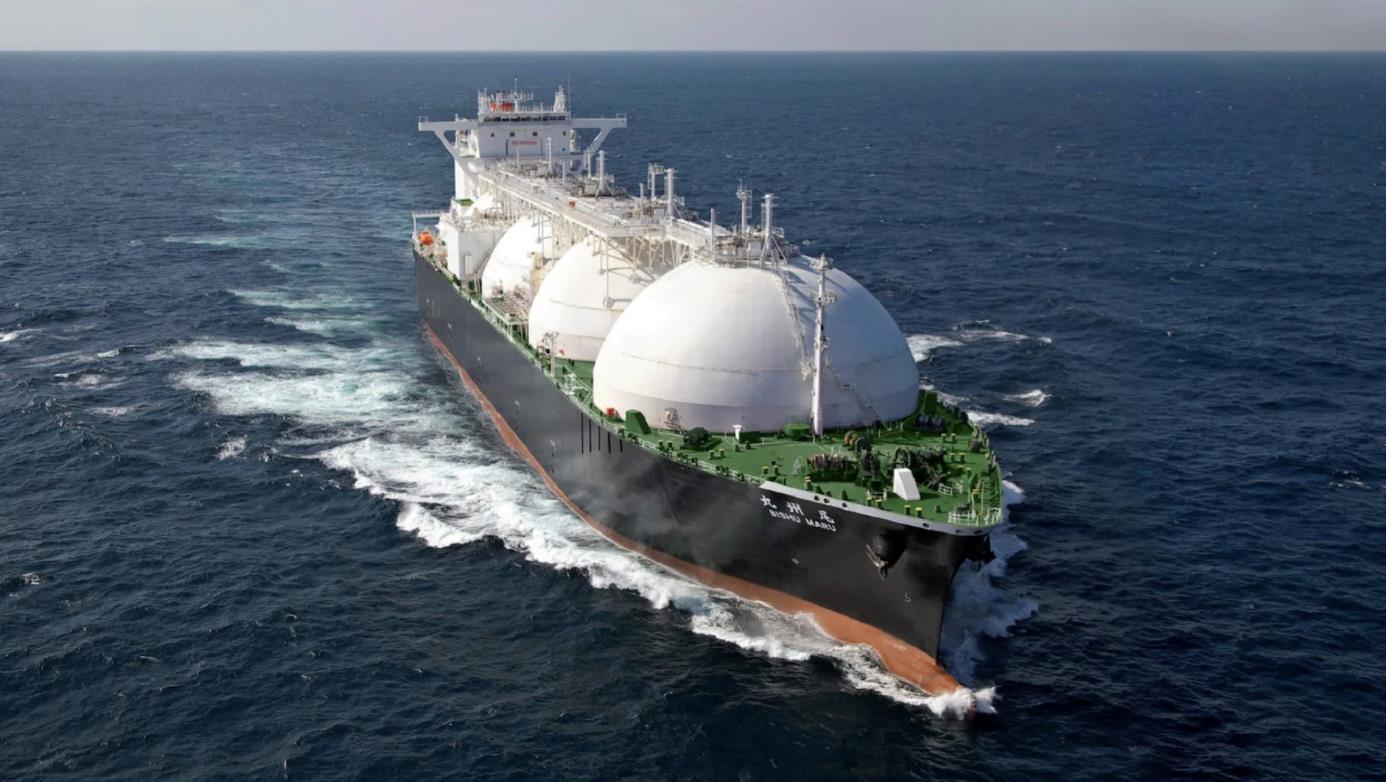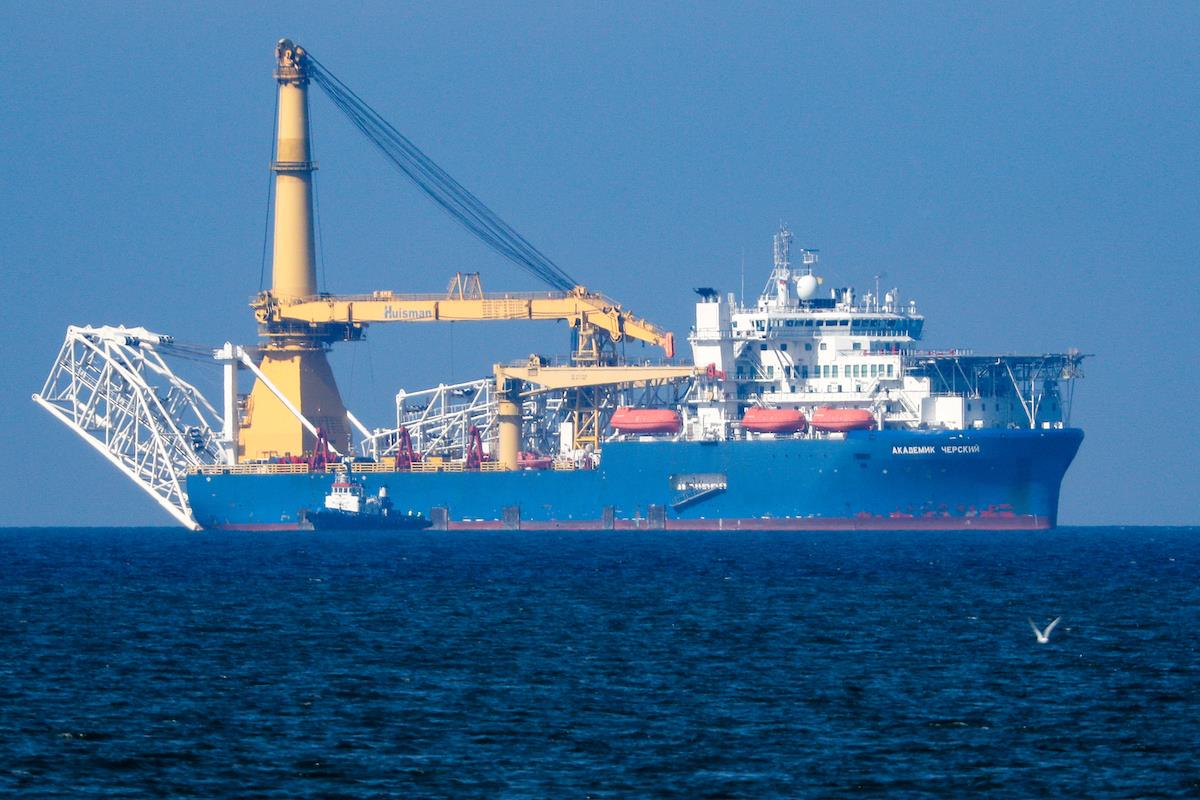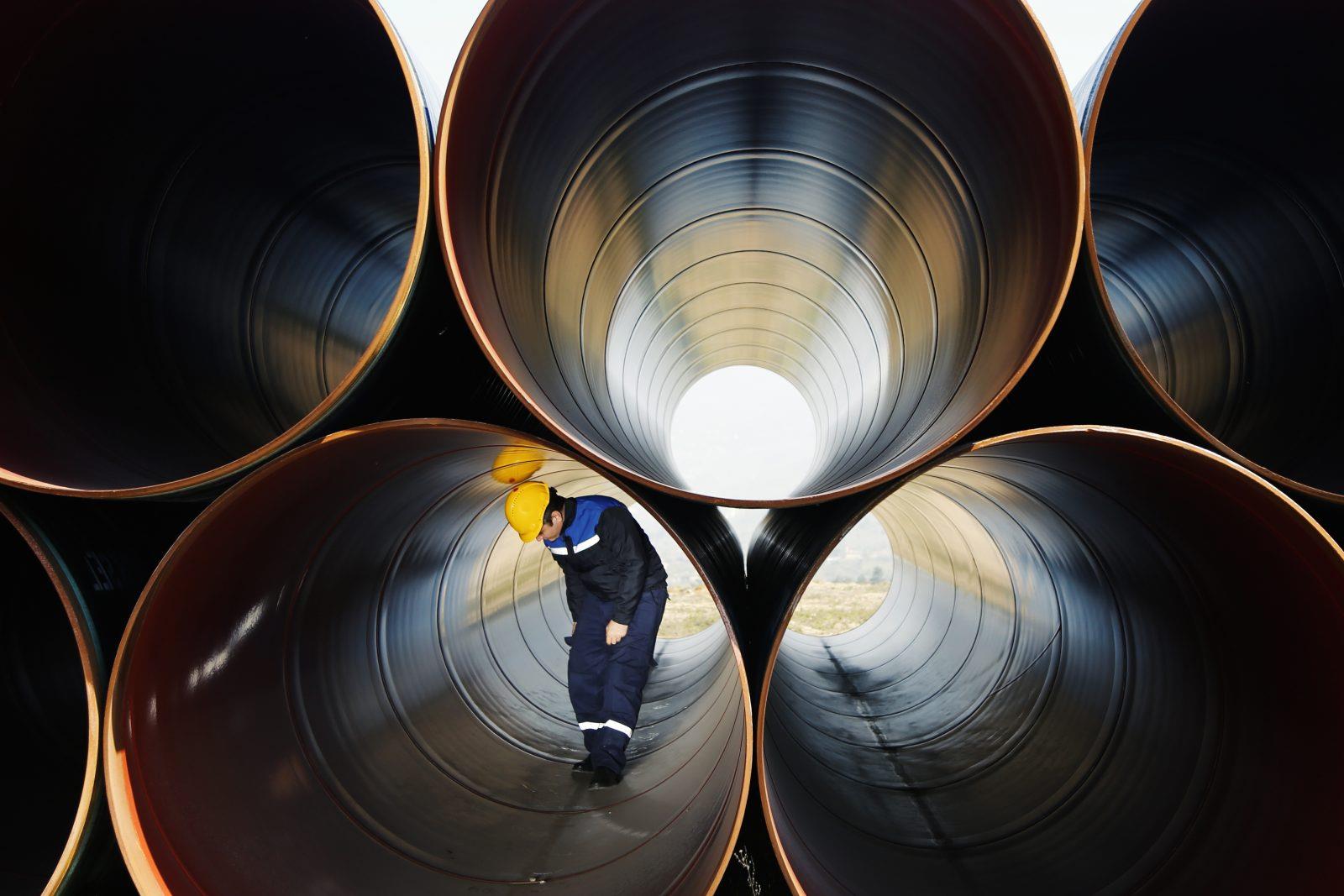(MENAFN- Asia Times)
European policymakers' vow to cut the EU's dependence on Russian gas by two-thirds this year is feasible, but will be“painful and costly,” according to a sectoral analyst.
“I think this two-thirds can and will be done,” Sverre Alvik, director of Energy Transition Research at DNV , a Norway-headquartered classification and advisory organization working in the global maritime and energy sectors, told Asia Times.“But it comes at a high cost, and Europe seems willing to accept that cost as it is now.”
Alvik, the author of last month's DNV report titled The Ukraine War will not Derail Europe's Energy Transition noted that both the political and public will seems firm.
“People feel the war in the sense that energy is every expensive,” he said. But he saw no signs, as yet, of a protest or voter movement against sanctions on Russian natural gas, widely seen as a“bridge fuel” toward a decarbonized world.
“We might have seen that if there had been a different outcome in the French election, but we did not,” he said.“The longer the war lasts, the more impact it will have on our daily lives and the more questions there will be on whether we are doing the right thing, but I don't see that impact yet on the general population or politics.”
Increased spending – on both energy and the new facilities needed to enable Russian import substitution – are unlikely to sway the issue.
“Countries will find the money as it is urgent from an energy security point of view,” Alvik said.
While the EU's dependence on Russian energy imports has been pointed out as a black hole in the West's sanctions regime – if not outright hypocrisy – the war itself is ironically working as a kind of balancing factor.
With the conflict adding further pressure to a shaky pandemic recovery, surging inflation risks and a weakening China outlook, anticipated falls in GDP will lead to a 3% drop in European energy demand over two years, Alvik's team predicts.
But while Europe faces an energy consumption crisis – natural gas prices stand at a 14-year high – the risk for Russian producers look even greater.
According to 2020 data from Statista , the EU is by far the biggest buyer of Russian natural gas. In 2020, Germany was the largest single buyer internationally, taking 19.4% of the total supply. Italy was the second largest, buying 10.2%, while France was in fifth place, purchasing 6.1%.
Diversification of Russian gas production from the EU to prosperous customers in, for example, East Asia, is not feasible – at least not in the short- or mid-terms. Hence, DNV estimates that gas production in North East Eurasia, which includes Russia, Ukraine and other former Soviet countries, will have declined by 24% in 2024.
That looks set to deal a major blow to the economy of Russia, home to the world's largest reserves of natural gas. The country produces about 17% of global natural gas, making it Russia's third most valuable export – after old school crude oil and petrochemical products.

One of the massive ships that transport gas. Photo: Supplied
EU looks to LNG from PNG
Russian exports made up 33% of Europe's overall natural gas consumption in 2020. That presents the continent with a huge challenge as it works to both punish Russia and ensure its own energy security by transitioning to other gas supplies and suppliers, and indeed, other energy sources.
According to Alvik's April report,“roughly one-third of European gas demand is used for buildings' heating and cooking, and another third for electricity production. Almost 20% is used by the manufacturing industry, and the remainder in the petrochemical industry and by the gas industry itself during production.”
Russia supplies the EU with piped natural gas, or PNG. Once pipelines are emplaced, PNG is cheaper than Liquid Natural Gas, or LNG. However, non-Russian PNG production in locations that are linked to European gas pipeline networks – Algeria, Azerbaijan and Norway –“can only inch their output upwards,” the report noted.
The heart of the EU's transition will likely be from PNG to LNG, Alvik said. The top five producers of the latter, as per 2021 , are Australia, Qatar, the US, Malaysia and Algeria. Outcast Russia is in sixth place. LNG can be transported more flexibly, as it is not restricted to fixed pipelines that run from point A to point B, but is pricier than PNG.
However, the more pressing problem is not prices – a bullet that European consumers and companies are already biting – but physical shortfalls in the equipment and facilities that LNG requires.
“The big barrier is the amount of infrastructure available. There are not enough import terminals to receive sufficient amounts of gas to Europe,” Alvik said.“You need regasification terminals to take [liquefied] gas from ships to re-gasify it.”
Extant terminals in the UK, Spain and Portugal lack the capacity, and/or the transport networks, to ship LNG into or across Europe. So, two solutions present themselves: one short-term, one long.
Short term, Germany is cornering global contracts for FSRUs – Floating Storage and Regasification Units – which can be moored offshore to re-gasify LNG and pump it into terrestrial pipelines. However, according to Alvik, there are a limited number of these huge machines, and they only have approximately one-quarter the capacity of an LNG terminal.
The longer-term solution is to build more LNG terminals – a process that will take 2-3 years, he said. But moves are proceeding on that front with some alacrity.
“As this is seen as a struggle between suppression and freedom, democracy and dictatorship, it was interesting to see how politicians have acted,” said Nikos Spaeth, DNV's head of communications for Asia-Pacific, and a German national.“For years nothing happened on the LNG terminals, but now they are signing deals.”
However, gas first has to get to terminals. Another limiting factor when it comes to substituting for Russian PNG is the availability of carriers – the huge, hugely expensive and hugely sophisticated ships – that transport LNG across the world's oceans.
The production capacities of giant shipyards in countries like South Korea are fully booked through to 2024-2025, said Spaeth.“There may have been a few that were idle, but they are not idle now,” Alvik added.“Everybody is going full steam.”
An even longer-term solution to the energy security challenge is to upgrade local gas production, Alvik said. He estimates that Europe will produce 12% more gas between 2022 and 2030. That gas lies in North Sea fields, and its expanded extraction is one signal of the global shift away from oil to gas.
“Historically you inject gas into wells to get more oil, but now gas is more valuable,” he said.“So you export more gas, which leads to less oil being exported.”

The Russian pipe layer vessel Akademik Cherskiy in waters off Kaliningrad in 2020 as construction of the Nord Stream 2 gas pipeline neared completion. Photo: AFP / Mikhail Golenkov / Sputnik
Making up the shortfall
As this difficult transition is implemented, other factors will need to come into play.
“Beyond nudging consumer behavior towards lower energy use, there is scope for a concerted policy push for energy efficiency, a postponement of nuclear retirements and an extensive renewable energy buildout,” the DNV report notes.
“There is certainly an opportunity for acceleration on these fronts: Belgian nuclear, French heat pumps, German solar and pan-European wind will all contribute to a lower dependence on imported Russian energy.”
Still, the report warned:“Some of these options can make a difference this year; others will need multiple years to take meaningful effect.”
For example, the postponement of the planned retirement of nuclear plants, which is relatively easy to implement, is far from a perfect solution.“There are maintenance and security issues,” Alvik said.
Making nuclear doubly problematic as a gap filler is attitudes in the EU's largest industrial economy. Germany remains wedded to prior commitments to phase out all domestic atomic by end of the year.“They would rather burn coal,” Alvik said.
What, then, of renewables? Europe's 2050 clean energy transition is likely to be accelerated by the war, but there are timing, technology and cost issues related to green energy, the report notes.
“While non-fossil supply and energy efficiency can and will be accelerated, there are counterforces at work with respect to the energy transition. These include burning more coal to replace natural gas and increasing the costs of electric vehicle batteries and photovoltaic panels. To this extent, the push for energy security works against the transition.”
Although the DNV report admitted there are many imponderables – notably the duration of the war, and whether its end will result in a new cold war in Europe, or a more relaxed détente scenario – it modeled a complete phase-out of Russian gas by 2025.
According to the model, in 2024 only 6% of the reduction in natural gas use will be taken up by coal –“the fuel of last resort.” Upgraded nuclear energy will make up a hefty 33% of the shortfall of Russian gas by 2023.
Bioenergy – mainly from sewage and waste – makes up 20% of the shortfall in 2024. The model found that renewables offer little immediate relief. However, over the longer term – by 2030 – they will take up half of the Russian gas shortfall.
By then, Europe's overall gas usage will be down 9% compared to DNV's pre-war model.

The direction of Russian gas pipelines is shifting from west to east. But it will take a long time. Photo: iStock
Damage assessments
Still, the conflict continues to birth black swans, such as Russia's severance of supply to Poland and Bulgaria last month. Another one sailed into view last week when Kiev announced it was diverting portions of Russian gas from one access point – now controlled by Russia-backed separatists – to another access point under Ukrainian control.
“Over lengths of a pipeline there are several valves you can shut off,” Alvik explained, noting that this is always an operator's risk when pipelines run through a third country.“That country can stop gas going through the pipelines physically as if there is a leak – say, if a truck runs into it – you have to stop the flow.”
It is unclear what impact Kiev's step will have on the European gas supply.
“Rerouting is possible through a net of pipelines, but there is a limited capacity in all this,” Alvik said. Though he does“not have an overview” of the impact the step will have on the EU's gas supply, he added:“I would assume for the moment that there are other routes with sufficient supply.”
Though the weather in Europe is warming up at present, politicians and energy policymakers may expect to face even sterner tasks as 2022 moves into autumn – particularly if Russia steps up its hybrid war and turns off the taps completely.
“Europe wants to free itself from two-thirds of Russian gas this year, but that last third will have more dramatic consequences,” Alvik warned. Shortfalls in energy availability would have consequences on industrial production and household behaviors.
Even so, while the outlook for Europe is problematic, the outlook for Russia is worse. Having constructed massive, trans-continental pipeline networks across Eurasia to Europe, it cannot simply switch its supply eastward.
“Gas has a shorter route to Europe than to the east,” Alvik said.“What is stopping more export is there is no more export capacity in the pipelines – it would take 5-10 years to build new pipelines across to China.”
MENAFN17052022000159011032ID1104228466